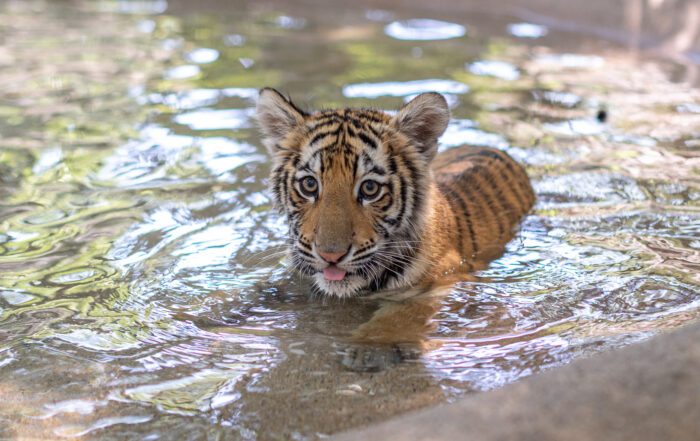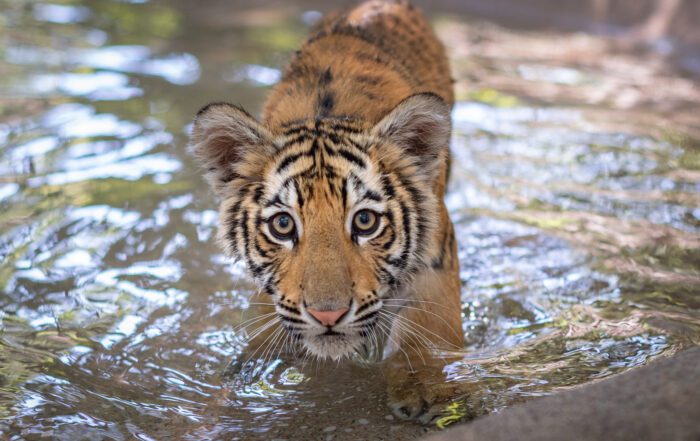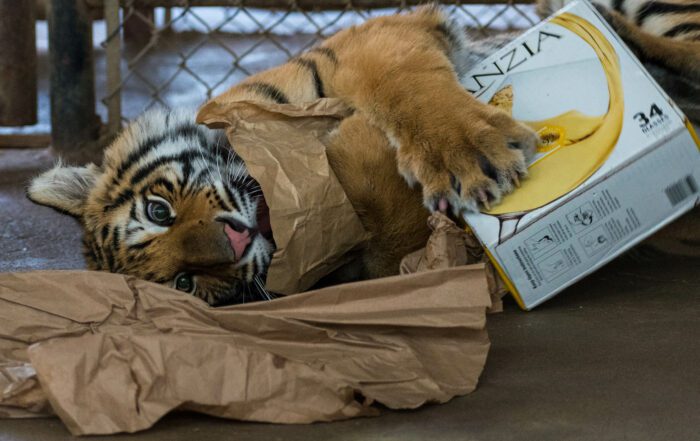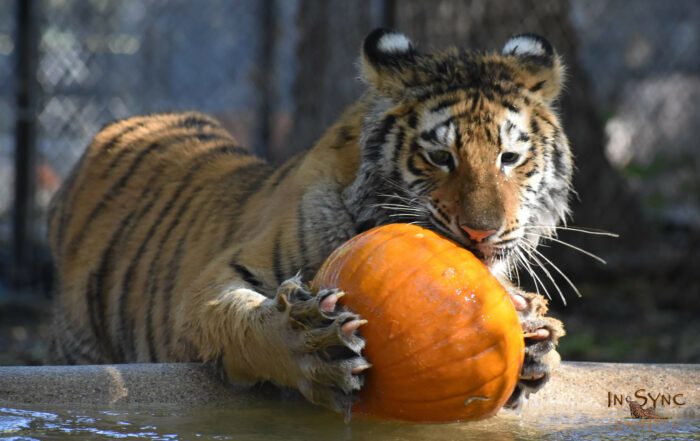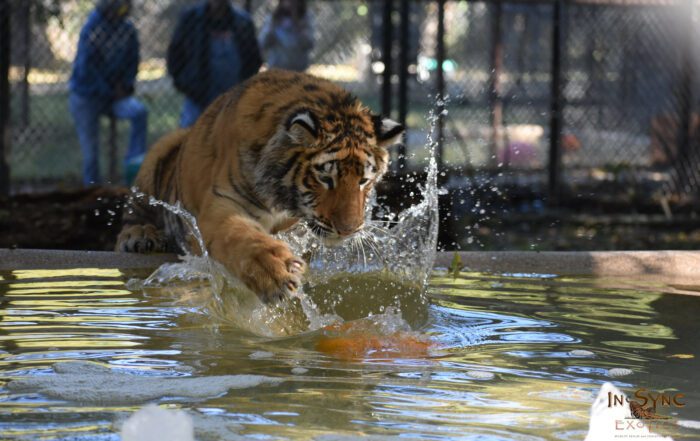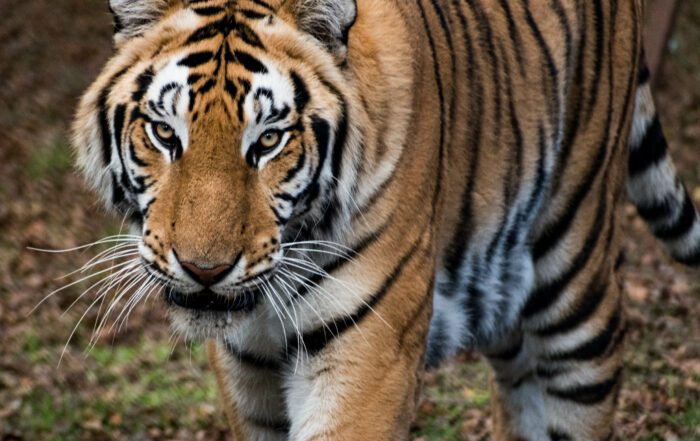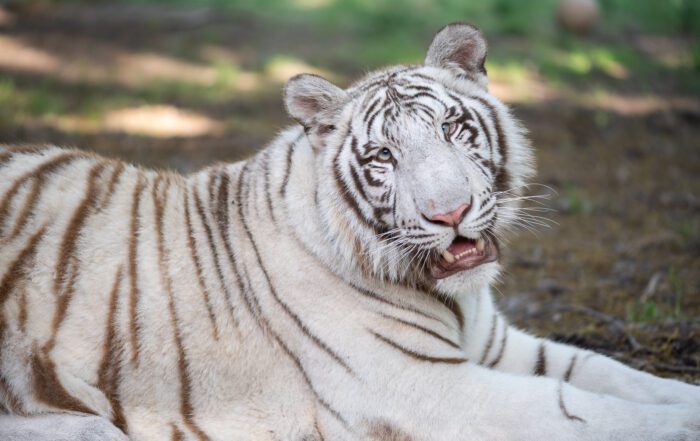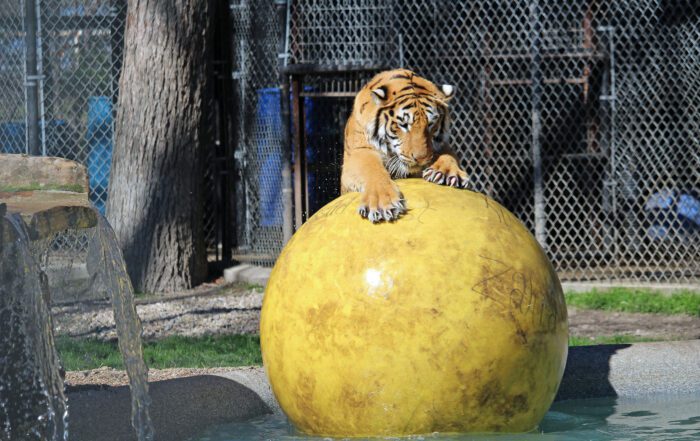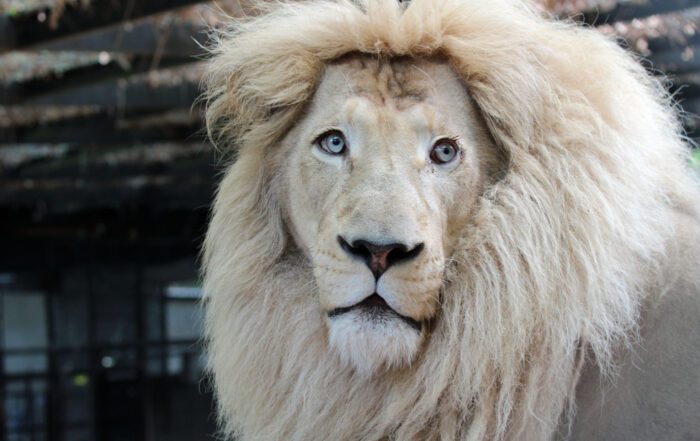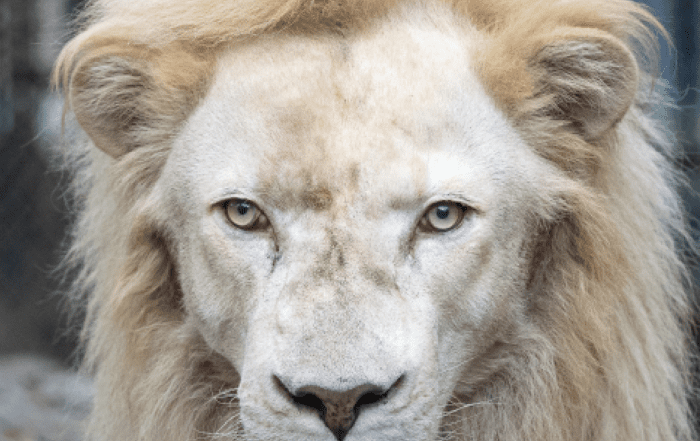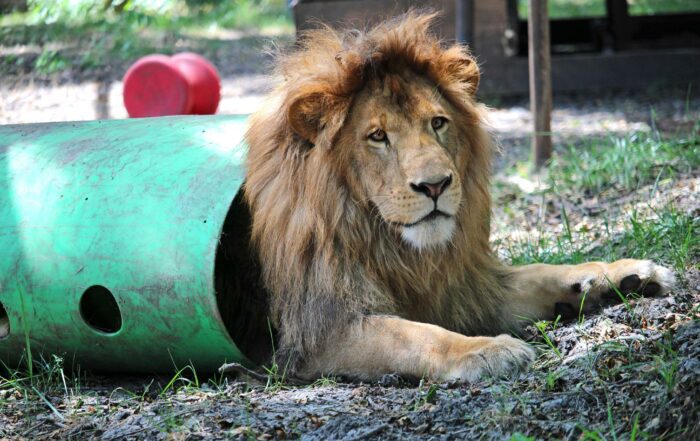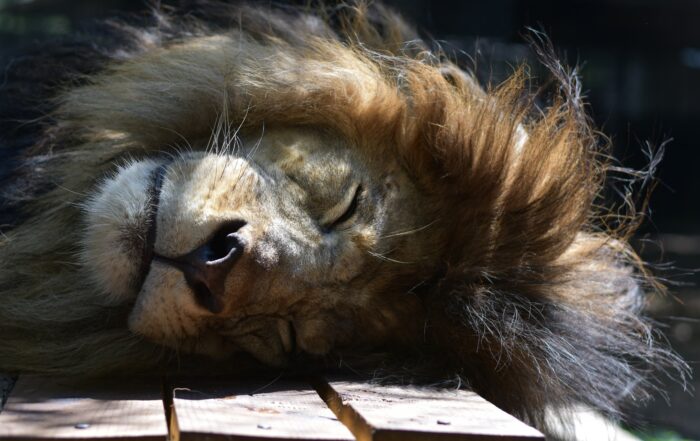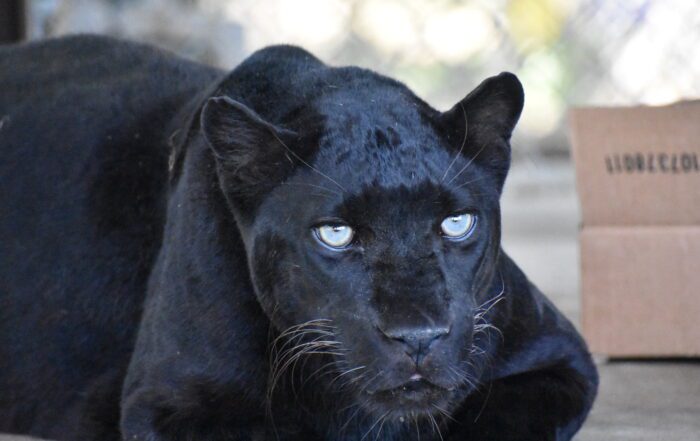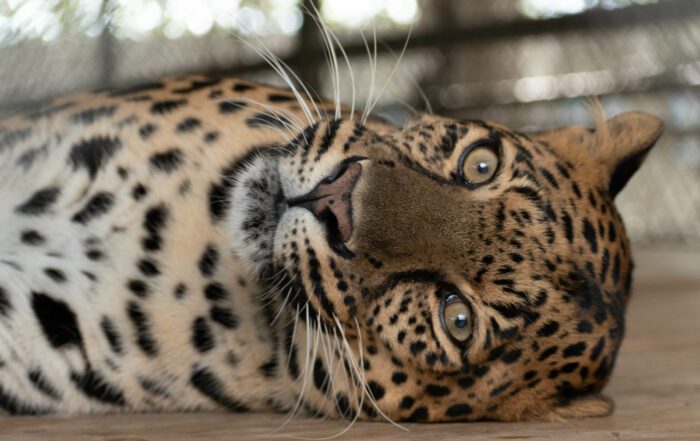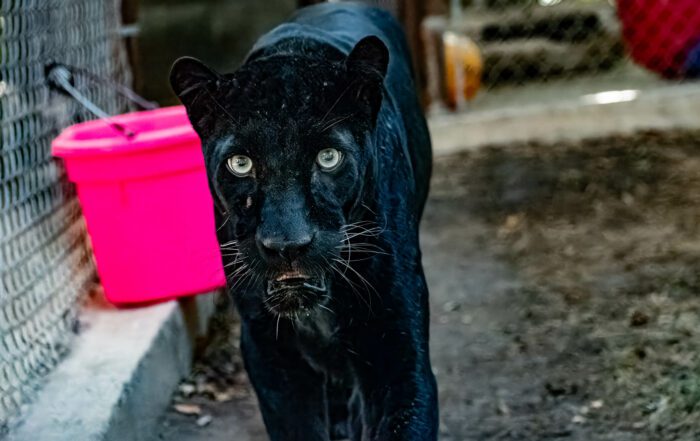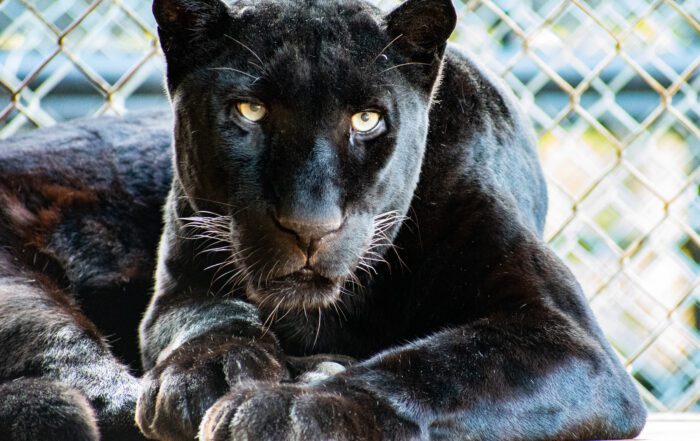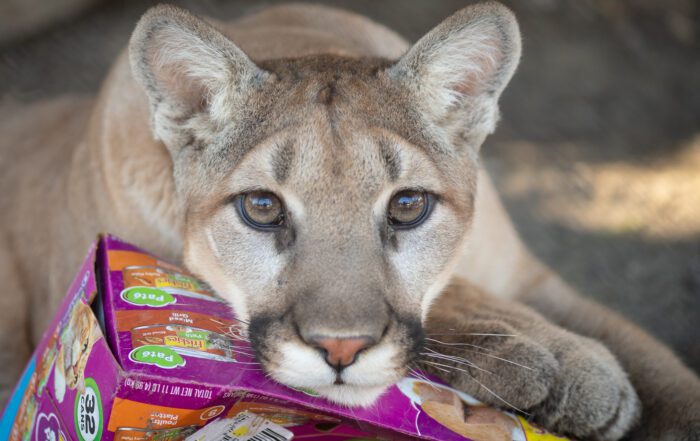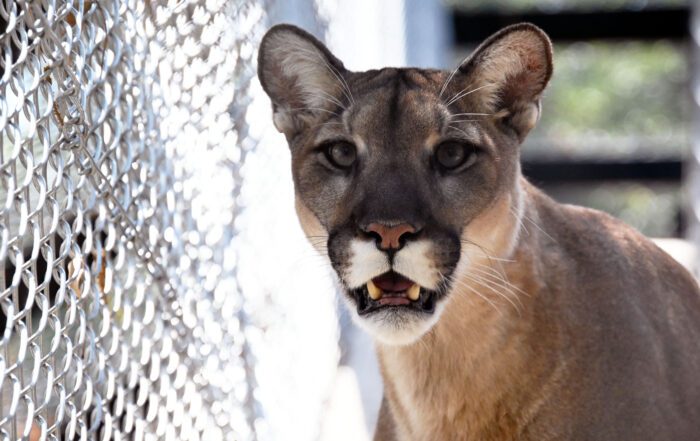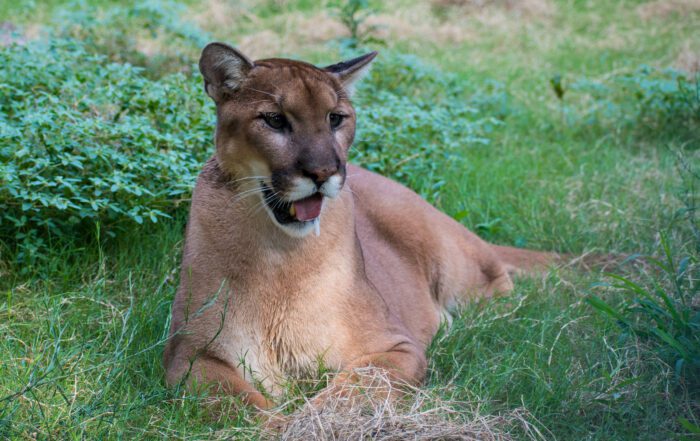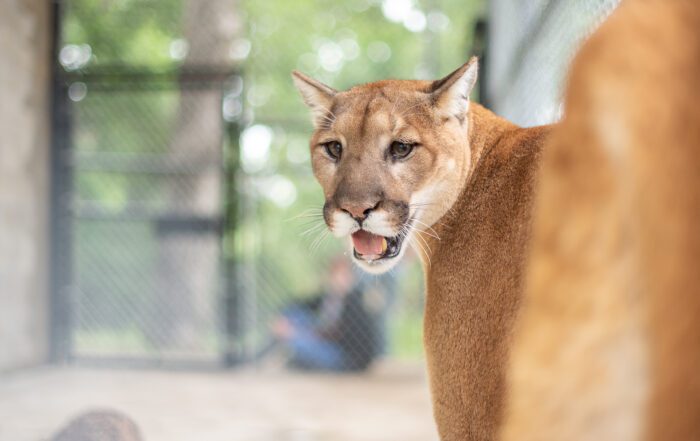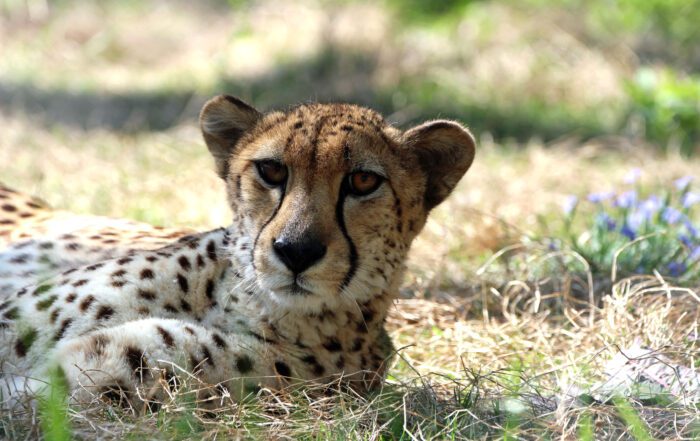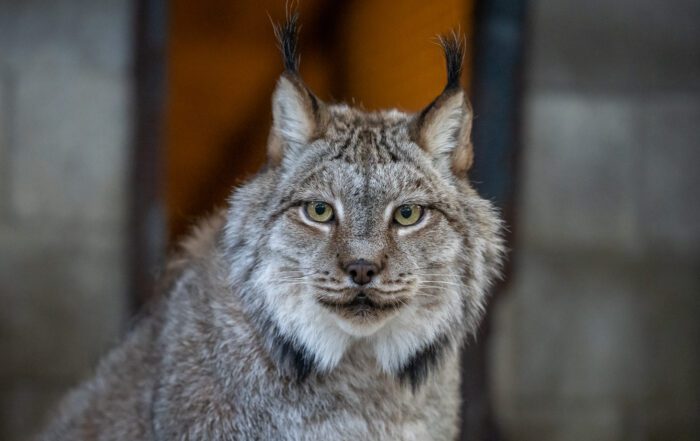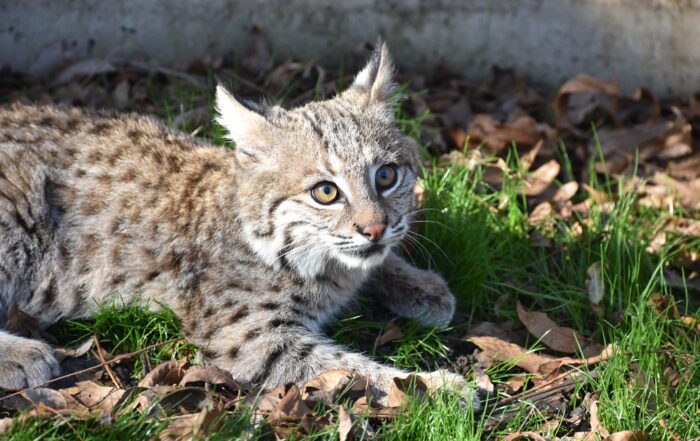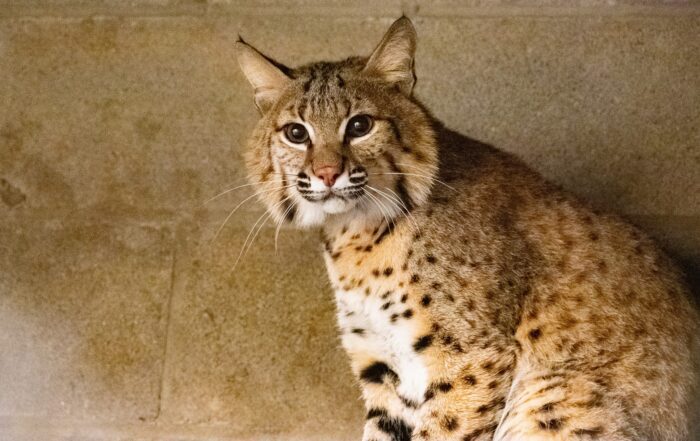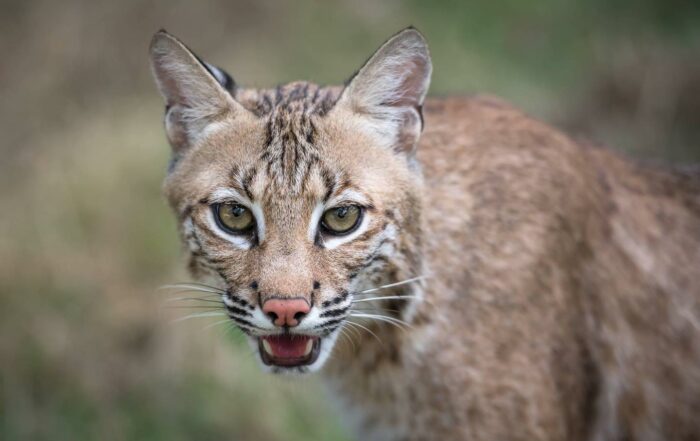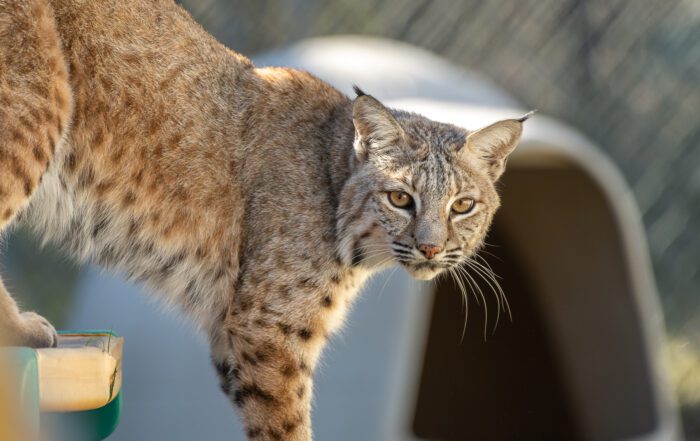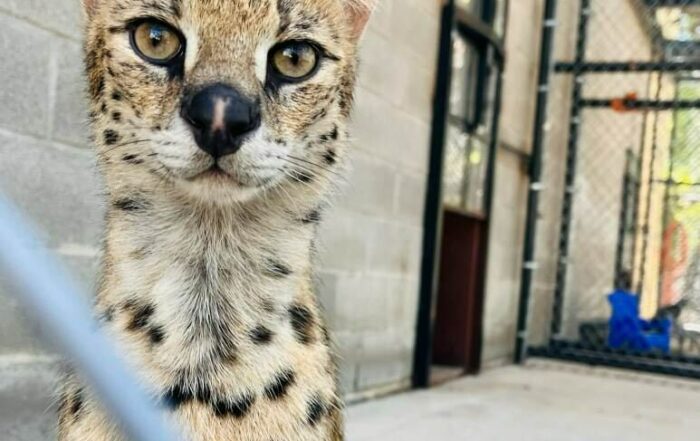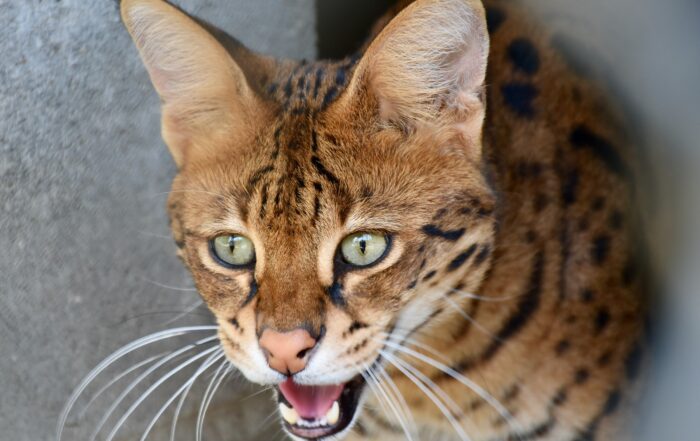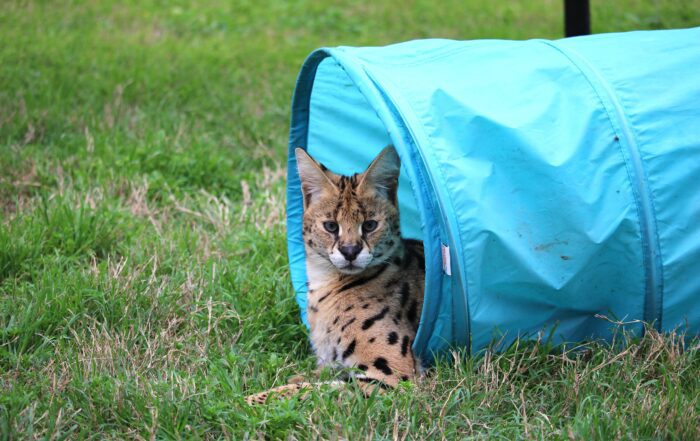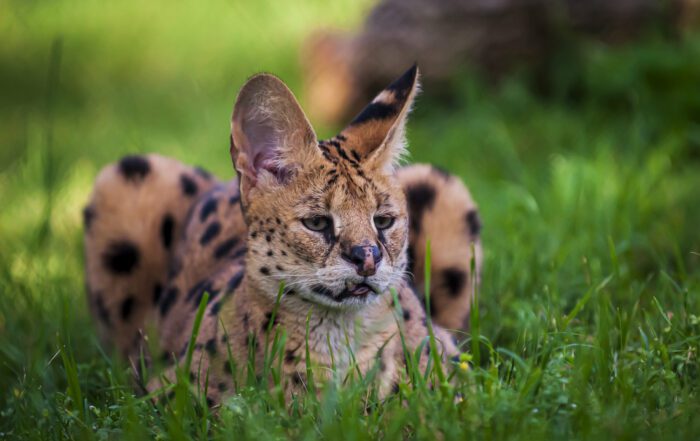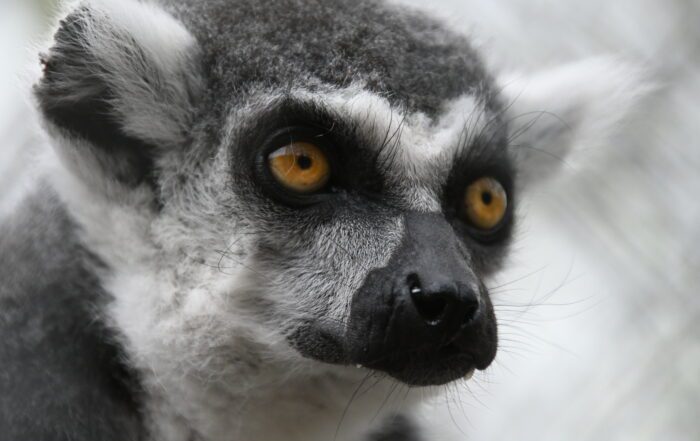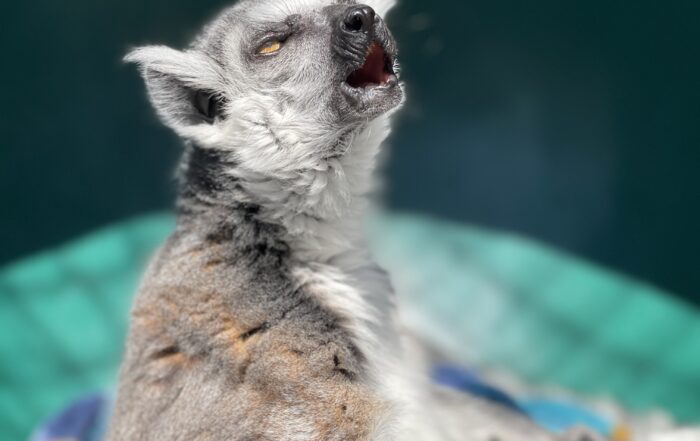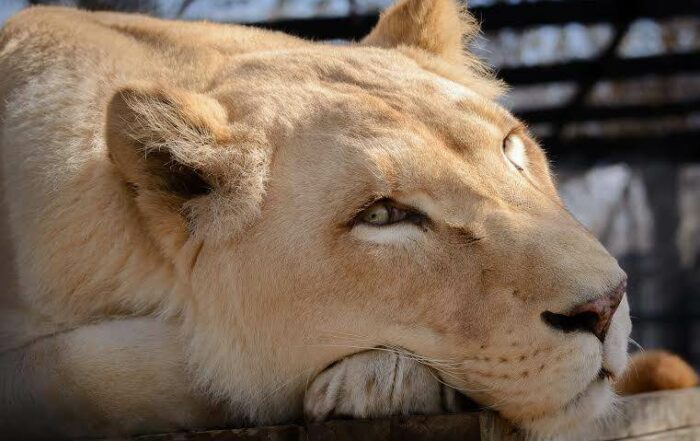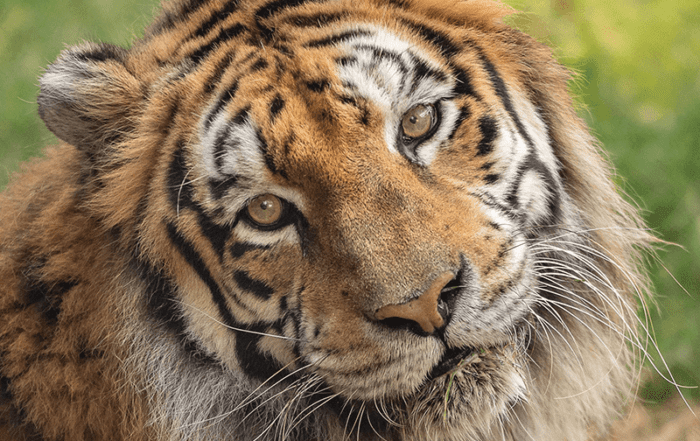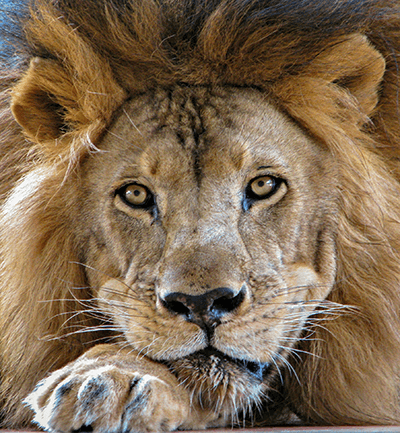The tiger is the largest member of the felid (cat) family. They sport long, thick, reddish coats with white bellies and white and black tails. Their heads, bodies, tails and limbs have narrow black, brown or gray stripes. Three of the nine subspecies of tigers are now extinct.
Renowned for its majesty and nicknamed the King of Beasts, the lion possesses both beauty and strength. Lions vary in color but typically sport light yellowish-brown coats. Mature male lions are unique among the big cats due to the thick brown or black manes that encircle their necks.
The elegant, powerfully built leopard has a long body, relatively short legs and a broad head. Its tawny coat is covered with dark, irregular circles called “rosettes.” Leopards come in a wide variety of coat colors, from a light buff or tawny in warmer, dryer areas to a dark shade in deep forests. The spots, or rosettes, are circular in East African leopards but square in Southern African leopards.
The cougar is the largest wild cat in North America. The coat is typically tawny, but ranges to silvery-grey or reddish, with lighter patches on the under body including the jaws, chin, and throat. Infants are spotted and born with blue eyes and rings on their tails. Young cougars have spots but adults do not. Cougars have powerful limbs and can leap as high as 15 feet and as far as 40 feet.
The world’s fastest land animal, the cheetah, is a unique and the most specialized member of the cat family and can reach speeds of 70 mph. Acceleration from 0 to 84 km/hr in just 3 seconds, with a full speed of 110 km/hr, means that the cheetah can out-perform a sports car! Unlike other cats, the cheetah has a leaner body, longer legs, and has been referred to as the greyhound of the cats.
A lynx is any of the four species within the medium-sized wild cat genus Lynx. The name originated in Middle English via Latin from the Greek word lynx, derived from the Indo-European root leuk-, in reference to the luminescence of its reflective eyes. Lynx have a short tail, characteristic tufts of black hair on the tips of their ears, large, padded paws for walking on snow and long whiskers on the face. Under their neck, they have a ruff, which has black bars resembling a bow tie, although this is often not visible. Body color varies from medium brown to goldish to beige-white, and is occasionally marked with dark brown spots, especially on the limbs. All species of lynx have white fur on their chests, bellies and on the insides of their legs, fur which is an extension of the chest and belly fur.
The most common wildcat in North America, the bobcat is named for its short, bobbed tail. They are medium-sized cats and are slightly smaller, but similar in appearance, to their cousin, the lynx. Their coats vary in color from shades of beige to brown fur with spotted or lined markings in dark brown or black.
Servals are characterized by tawny, black-spotted coats and a long neck and legs to see over savanna grasses. They have large ears and an acute sense of hearing.
Ring-tailed lemurs are medium-sized primates that are found only on the island of Madagascar. They are the most internationally-recognized lemur species, thanks to their long, black-and-white, ringed tail. Ring-tailed lemurs are also known for their scent-marking behavior, in which males will rub their tails on scent glands and then wave them at rivals.
This section is under construction. Please bear with us.


